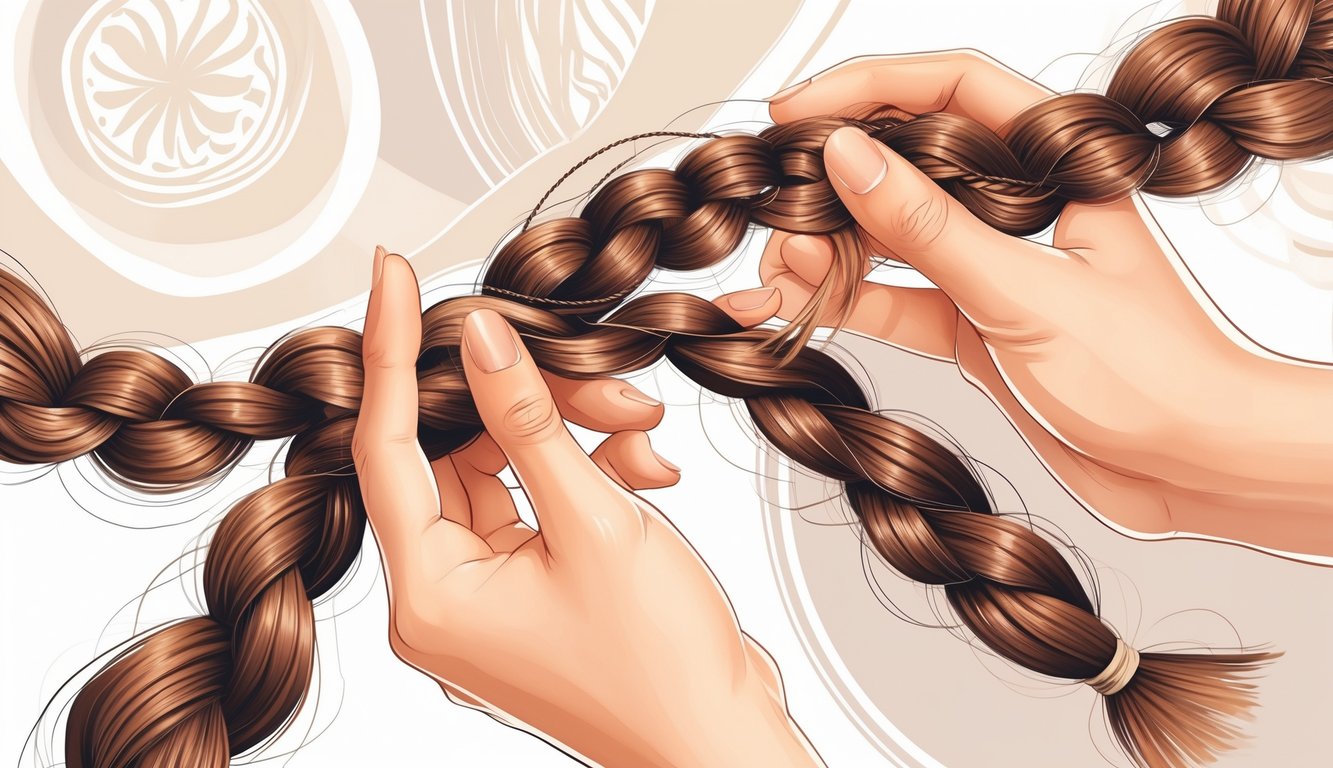
Popular Braiding Patterns and Their Effects
Sectioning isn’t just a technicality—it’s everything. Longevity, comfort, breakage risk, all of it. But clients always think it’s just about how the final style looks, not the grid underneath.
Box Braid Foundations
Dividing hair for box braids feels like a weird test of endurance. Straight lines—squares, diamonds, triangles—should be easy, except every scalp has a mind of its own. But if you skip the grid, the whole style collapses in two weeks. Box braids protect hair because each strand gets wrapped tight and even. The myth? Smaller boxes last longer. Actually, too small = more tension, flakes, and itching. Huge boxes? Chunky for five minutes, then they unravel and you’re left with awkward scalp shapes. Who wants that?
Some stylists swear by dividing by scalp density—one lady I know only uses Japanese steel combs, which sounds dramatic, but whatever. For me, size symmetry is king, so I just go by touch. No grid, no braids. End of story.
Cornrow Influence
Ever seen cornrows with more zigzags in the base than the actual style? I have. My first attempt was a disaster—feed-in braids, messy parts, roots looked like fishing line. Never again.
Cornrows set the “lifespan clock” for every protective style on top. When I follow clean, consistent paths, tension spreads out and the style holds up for weeks—sometimes two months (apparently WebMD backs me up on this, which is weirdly validating). But mess up just one row and the roots puff out, giving away every shortcut.
People think the scalp pattern’s invisible, so why care? Because detangling is a nightmare without symmetric bases. Stylists who ignore hair porosity at the root? You can spot the flakes lining up along the curves by week three. Nobody sees it—until they can’t stop scratching.
The Zig-Zag Pattern Advantage
Zig-zag partings. Nobody prepped me for how much they’d mess with my brain or my hands. I used to think they were just for show, but nope—turns out, they’re like this sneaky cheat code for stretching out a style’s lifespan. My old mentor—she’s the legend who once braided the mayor’s daughter’s hair behind a festival stage, true story—always called zig-zags “insurance.” I rolled my eyes, but now? Yeah, I get it.
Hair density all over the place? Zig-zag parting, for whatever reason, sort of spreads the pull so you don’t end up bald in the same three sad nape spots (ugh, been there). Straight lines just stack the tension—ask my scalp. And prepping for updos? Zig-zag base patterns are the only way I can hide section lines. I’ve read every braiding guide out there and literally none mention you can unbraid half the style and keep the rest intact. Why is that a secret?
Downside: a stylist friend swears zig-zags make lice checks a nightmare. Not my main worry, but it’s a mess for scalp exams. Oh, and if you’re playing with highlights, angled parts make some colors pop and others just… vanish. Hair remembers, I swear.
Advanced Braiding Techniques Explained
Why do stylists—actual, licensed ones—still botch fishtails? It’s wild. They rush, or use those shiny plastic extensions that can’t even grip a single pin. Tension is everything, but I see people faking it with “aesthetic” over actual technique. Spoiler: you can’t cheat your way to pro results.
Creating Fishtail Braids
Fishtails aren’t complicated, but every class I teach, someone’s twisting like they’re wringing laundry instead of overlapping strands. No one tells you this: start with totally detangled, product-free hair. Silicone serum? That’s how you get a limp braid by lunch.
Elite stylists? They use rat-tail combs, not fingers, for parting. Clean lines matter. I learned that from a session stylist in L.A. who’s obsessed with section width—quarter inch or less for crazy detail, especially for photo shoots. Pancake it after, and you get that “wait, is that real?” look on advanced fishtail braids. Mess up the pattern and your client will know, trust me, when it falls apart in twenty minutes.
I saw someone finish with edge control as gloss. Looked great—fifteen minutes later, the braid snapped. Tension, again. My hands get tired, honestly. Sometimes I wear a wrist brace. Not glamorous, but whatever.
Combining Patterns for Unique Looks
Hybrid braids? Not new. But every time I mix Dutch at the crown and waterfall on the sides, clients act like I invented it. It’s just muscle memory—train your hands to switch between underhand and overhand pickups, no pause. Cowlicks? Pin down the section before you swap techniques or the whole head shifts and suddenly you’re off-center.
Once, I used texturizing spray, started with a classic three-strand, then rope-twisted just the nape—three people swore I used extensions. Didn’t. Coverage matters, but the pattern switch underneath is what really changes the whole look. Start with a visible braid at the scalp, loosen it at the ends, and suddenly it’s a different style.
If it’s humid, use a light pomade at the transition. Not mousse. Learned that the hard way—woke up with crunchy, fused-together strands. Looked like a dollar store wig.



